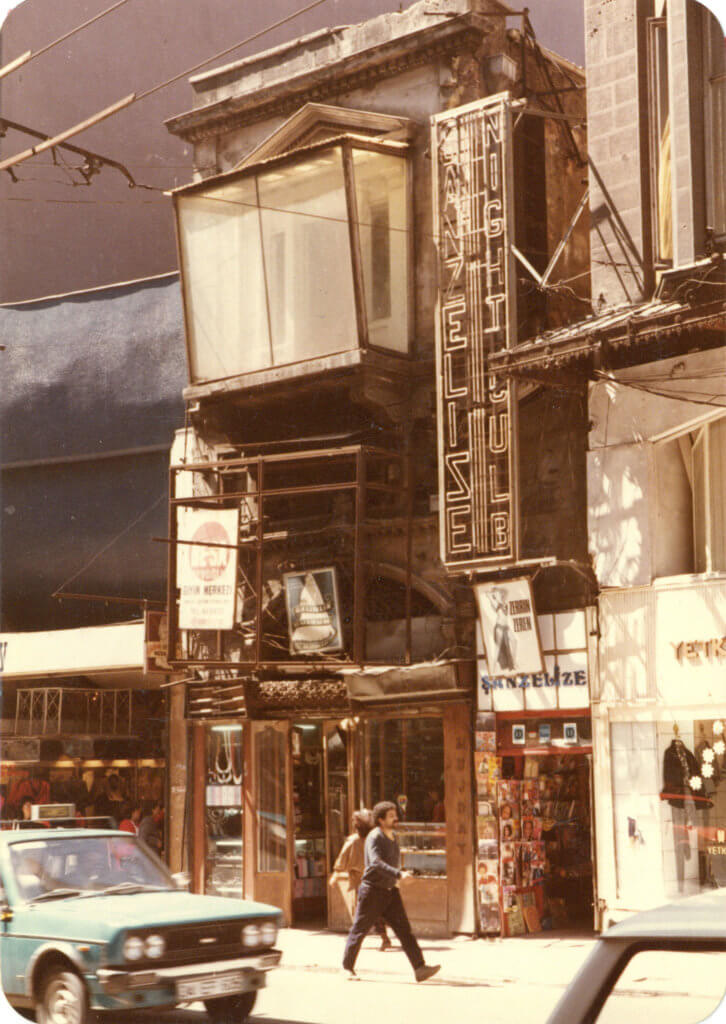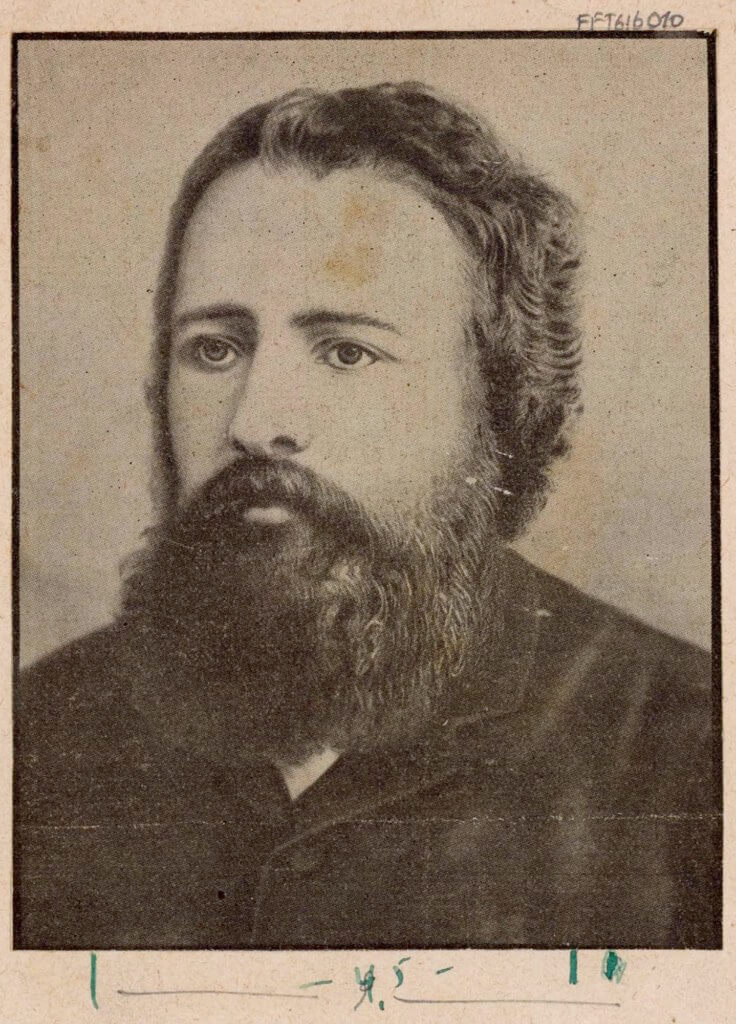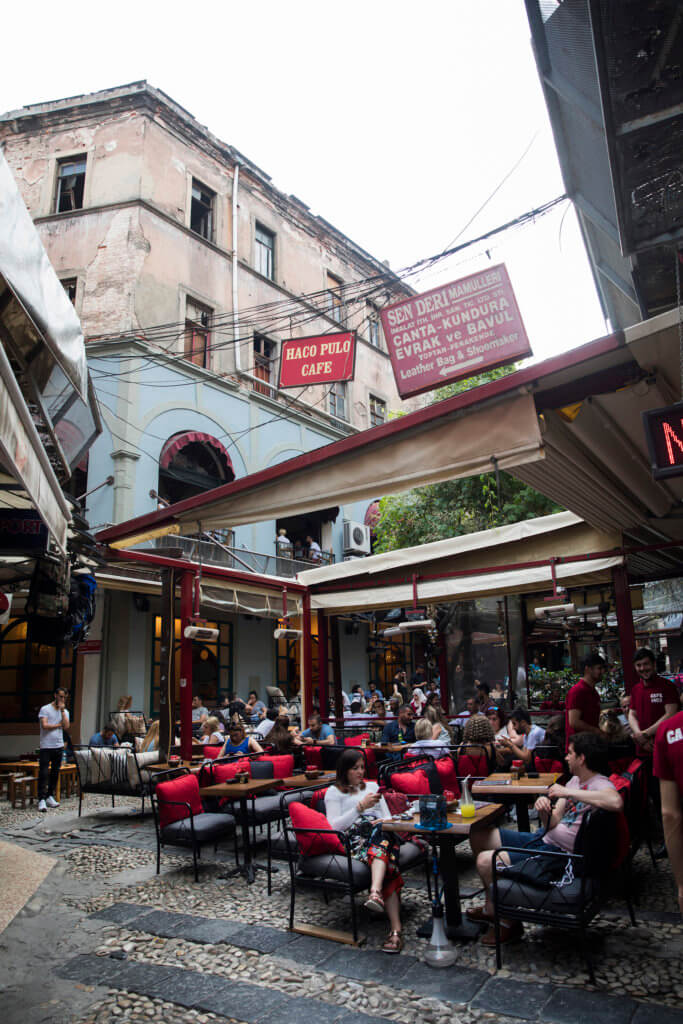The name of the 157-year-old edifice was changed first to “Danışman” and then to “Han (Inn) Passage”, having been deemed objectionable by retired General İsmail Hakkı Akansel appointed Mayor of Istanbul after the 12th of September 1980 military coup. Yet many of Istanbul’s residents faithfully continue calling both the inn and the arcade Hacopulo or Hazzopulo. It became the Hazzo Pulo Wine House located within it that kept the original name of the complex alive.
Perhaps the most important aspect of the inn when it opened was its being Istanbul’s first shopping and fashion center. Popular men’s and women’s tailors, hat makers, button sellers, embroiderers, and famed designers were based here. This was also where pure silk petticoats, thrown silk and cordonnet threads were sold. Behzat Üsdiken lists notions sellers Yani Malaksotis, Kosmi, Kamik Acaryan, Lukidis and Adamantidis, men’s tailors Foskolo, Armao, Barbagallo and Marengo, as well as renowned boot and shoe maker Heral as those who had shops in the arcade from 1870 to 1880. In the subsequent period, these famous tailor’s shops, silk thread sellers, second-hand book dealers and music houses closed down one after another.
There used to be a passage called Hacopulo, now they’ve changed its name – what sheer arrogance. They’ve named it something or another: ‘Danışman Geçidi’… My father’s pharmacy used to be located here at number 38.
Quoted from a piece written by photographer Ara Güler, son of Dacat Güler who owned a pharmacy in Hacopulo, on the Russian Restaurant Rejans that was established by Russians escaping the Bolshevik Revolution of 1924 and has reached our day, having changed hands in the meanwhile.

Hazzopulo Passage. SALT Research, Photograph by Kayıhan Türköz.
Hacopulo Passage has taken its place in history as one of the spaces that left its mark on the artistic and cultural life of Istanbul. While mentioning the Adam Music Store (“Adam Musiki Mağazası”) that opened in the arcade towards the end of 1869 Üsdiken touches upon interesting details concerning Turkey’s musical history. The shop’s upper floor, which had become something of a concert space over time, was turned into an art school by Dikran Çuhacıyan in 1874 in order to train performers to stage operas in Turkish. In upcoming years Istanbul’s very first chamber orchestra also met with audiences in the same space. In 1890, an artist by the name of Zoli redecorated this place, converting it into a theater.
Eleni Kimpriti, daughter of the arcade’s original owner Hacopulo, passed away in 1956, as a result of which ownership of the edifice passed on to her daughter Elisavet Kimpriti, who deputized attorney Nikolay Yurla on matters of the arcade while moving abroad. When Elisavet Kimpriti died, it was her sister-in-law (brother’s spouse) Amallia Glanzmann who inherited the passage. Problems regarding the ownership of the arcade started cropping up in 1980. Investigating a complaint, it was determined that the last owner Glanzmann had passed away in Italy in 1976, and a trustee was appointed to this property. Hence began the unending inheritance suits. While these were ongoing, in 2003 another heir by the name of Domenico Serra came forward in Italy, and at the end of a six-year-long court case, he was registered as the owner of the arcade. However, when the Supreme Court of Appeals (also: Court of Cassation) overturned this decision, a trustee was appointed once more; and the arcade is currently still under trustee administration.
Namık Kemal and Ahmed Midhat Effendi
The printing press and executive offices of the İbret Gazette published by Namık Kemal and Ahmed Midhat Effendi in 1872-1873 were located in the two-storey building on the right by the Tepebaşı exit. The shop at no.13 in the arcade housed the printing press set up by Ahmed Midhat Effendi below his own apartment. The İbret Gazette was being printed here. The newspaper, brought into being in 1869 by Aleksan Sarrafyan under the name İbretnümâ-yı Âlem3***, continued under the management of Ahmet Midhat Effendi as of 1872. Shut down various times by the Abdulaziz government, the newspaper’s daily circulation reached 12 thousand. Attracting public attention particularly due to pieces written by Namık Kemal, considered the first “lead writer” in press history, İbret was eventually shut down definitively in 1873, never to reopen again. The reason for this was Namık Kemal’s play titled Vatan yahut Silistre (Homeland or Silistre). When the commotion of the crowd gathered in front of the offices of the İbret Gazette, chanting and cheering their approval of the play, alarmed the Ottoman Palace, the newspaper was shut down in April 1873. Following arrests in the Hacopulo Passage, Ebüzziya Tevfik and Ahmed Midhat Effendi were sent on exile to Rhodes, Namık Kemal to Cyprus, and sirs Nuri and İsmail Hakkı Bereketzade to Acre. The writers were only able to return after being granted amnesty on the occasion of the enthronement of Murad V. After this incident, the arcade became a meeting place for the Young Turks.

SALT Research, Feridun Fazıl Tülbentçi Archive.
3*** t.n. May be roughly translated as, “Lessons to Take from the World”.


